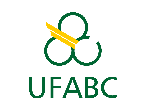Banca de DEFESA: JÚLIA KERSUL FARIA
Uma banca de DEFESA de MESTRADO foi cadastrada pelo programa.
DISCENTE : JÚLIA KERSUL FARIA
DATA : 09/12/2021
HORA: 10:00
LOCAL: https://meet.google.com/iwt-jqmu-gjo
TÍTULO:
Wetlands constructed with half a support of digested sludge of Water Treatment Plant applied to phosphorus and nitrogen removal from Synthetic Sewage
PÁGINAS: 80
GRANDE ÁREA: Engenharias
ÁREA: Engenharia Sanitária
SUBÁREA: Tratamento de Águas de Abastecimento e Residuárias
ESPECIALIDADE: Processos Simplificados de Tratamento de Águas
RESUMO:
Constructed Wetlands (CW) are systems inspired by natural ecosystems, where the removal of nutrients is based especially on natural purification, biological, physical and chemical removal, are decentralized, low-cost systems that can promote adequate levels of removal of nitrogen, phosphorus and organic matter, in addition these systems can work together with new technologies in order to improve the treatment of effluent. The microbial fuel cell (MCC) is a technology that allows the generation of energy during treatment, groups of bacteria release electrons and protons during the conversion of existing compounds in the effluent, this system can work together with the CW. The CW and CW-CCM can have different types of support medium, the specificity of this material can help in the treatment of effluent, recent studies show that the sludge from Water Treatment Plants (LETA) has high phosphorus adsorption capacity. In this context, this study aimed to evaluate the removal of pollutants in WC and CW-CCM systems supported by LETA. Six systems were analyzed, 3 of crushed stone and 3 of LETA, in TDH of 8, 5, 3 and 1.5 days for CW, and 1.5 days for CW-CCM, two systems had microaeration (one of each support medium ). The removal of organic matter (COD) in the crushed rock support medium was 88.1% and for LETA, 92.3%. For ammoniacal nitrogen (N-NH3), the systems with aeration at 0.8 mgO2.L-1.min-1 produced an effluent with low concentrations, below 10 mg. L-1. As for total phosphorus (TP), the best removal rates were in systems with LETA, with concentrations below 0.1 mg. L-1. In CW-CCM mode, energy generation measurements were performed, the maximum energy generated was 25.12 mW/m2 for gravel and 26.16 mW/m2 for LETA. Molecular biology analysis by FISH (Fluorescence in situ hybridization) method demonstrated that aeration systems promoted the growth of ammonia oxidizing bacteria (BOA) and nitrite oxidizing bacteria (BON), and also demonstrated that LETA and the strategy of inoculation developed the growth of phosphorus accumulating organisms (OAP), which acted in the biological removal of phosphorus.
MEMBROS DA BANCA:
Presidente - Interno ao Programa - 2342998 - RODRIGO DE FREITAS BUENO
Membro Titular - Examinador(a) Interno ao Programa - 1809833 - TATIANE ARAUJO DE JESUS
Membro Titular - Examinador(a) Externo à Instituição - FABIO CAMPOS - USP
Membro Suplente - Examinador(a) Interno ao Programa - 1814655 - LUCIA HELENA GOMES COELHO
Membro Suplente - Examinador(a) Externo ao Programa - 2357551 - CAMILA CLEMENTINA ARANTES




